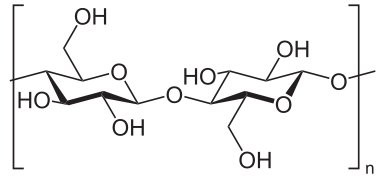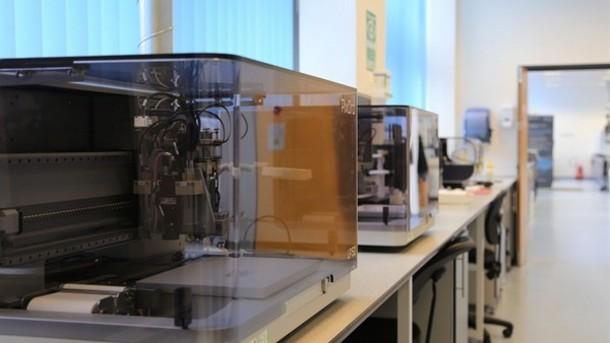Remember when you were a kid and you just didn’t feel right, how your mom would make you a big, steaming hot bowl of cellulose to warm your tummy? No? I don’t either. However, members of the Engineering and Physical Sciences Research Council (EPSRC) and the UK Knowledge Transfer Network (KTN) are working with the food industry to utilize cellulose particles as building blocks for 3D printing food.
The efforts here are to integrate additive manufacturing with advanced food production techniques so that AM isn’t just replicating what can be done by already existing processes and mechanisms. Rather than introducing 3D printing for novelty’s sake, the team of researchers are hoping that it can help to address some of the fundamental problems with current food distribution across the globe.It’s not as simple as feeding ingredients into a 3D printer. In fact, discovering exactly what edible ink needs to be is a primary focus of the collaboration. Dr. Jennie Lord, National Center Manager and Technology Translator at EPSRC, spoke at the 3D Food Printing Conference held recently in Venlo, the Netherlands, and explained the difficulties of arriving at the right formulation for the printing material:
“To bring around complex formulations that can be applied to 3D printing, we need a liquid that can solidify, but what other materials might exist in the future by adapting existing properties and those in the future to move forward and how can they be manipulated [is the subject of our research]. We are looking at bypassing water inefficiency and moving to dry powder that can be reconstituted…This technology is in its extreme infancy, scale is the biggest blocker at the moment.”
 One of the substances that the researchers are examining closely as a potential building block for printable food is cellulose. Cellulose is comprised of multiple glucose units in a crystalline structure and is most familiar to us as the material making up the primary cell wall of green plants. Ruminants, animals with multiple stomachs, can digest cellulose but human beings cannot. Which raises the question: how is this going to make food? University of Nottingham PhD student Sonia Holland offered this information:
One of the substances that the researchers are examining closely as a potential building block for printable food is cellulose. Cellulose is comprised of multiple glucose units in a crystalline structure and is most familiar to us as the material making up the primary cell wall of green plants. Ruminants, animals with multiple stomachs, can digest cellulose but human beings cannot. Which raises the question: how is this going to make food? University of Nottingham PhD student Sonia Holland offered this information:
“It’s the most abundant polymer, it’s natural, and comes from plant cell walls. It’s non-toxic, there is no human enzyme to digest cellulose and it is not fermented by gut bacteria. The crystalline structure is difficult to dissolve. In terms of food production it is not exactly food safe but there are ways to make it soluble.”
 I have to admit that I remained unconvinced. However, it appears that a portion of the research is dedicated to determining exactly how to make this material edible. I’m no scientist, but it seems like this would be a key component to using it as a substance with which to make food – although this does raise the question of whether we might be able to use this as a way to eliminate the need for such extensive pasture areas for cattle and instead 3D print their feed.
I have to admit that I remained unconvinced. However, it appears that a portion of the research is dedicated to determining exactly how to make this material edible. I’m no scientist, but it seems like this would be a key component to using it as a substance with which to make food – although this does raise the question of whether we might be able to use this as a way to eliminate the need for such extensive pasture areas for cattle and instead 3D print their feed.
In other words, this research is at the beginning stages and we shouldn’t expect delicious, nutritious helpings of cellulose printed food to be on our tables or in our stomachs anytime soon. Instead, this is a necessary foundational exploration to understand yet another way in which 3D printing might be used to address global needs. What do you think of this concept overall? Discuss in the 3D Printed Food forum over at 3DPB.com.
[Source: Food Quality News]Subscribe to Our Email Newsletter
Stay up-to-date on all the latest news from the 3D printing industry and receive information and offers from third party vendors.
You May Also Like
Boom Supersonic Test Flies Demonstrator Aircraft
Boom Supersonic hopes to revolutionize air travel by reintroducing supersonic passenger flights. The company has amassed over $700 million in funding, with notable contributions from entities like Japan Airlines, and...
Conglomerates Are Auctioning GE Metal 3D Printers and More
As the additive manufacturing (AM) industry continues to slough through its economic downturn, we’ve seen not only smaller firms like Uniformity Labs and Arevo go belly up, but larger entities restructuring in...
Interview: GE Additive Provides Series 3 Metal Binder Jet Update
For another year running, I survived the bustling insanity that is formnext. With a reported 859 exhibitors, 196 speakers, 32,851 visitors (50% international), and 54,000 m² of exhibition space, Europe’s...
Del Toro’s Pinocchio Achieves Stop-Motion First with Metal 3D Printed Metal Puppets
Did you know that the stop-motion puppetry featured in Guillermo del Toro’s 2022 film Pinocchio was accomplished through the use of metal 3D printing? Our story begins in the year...






























